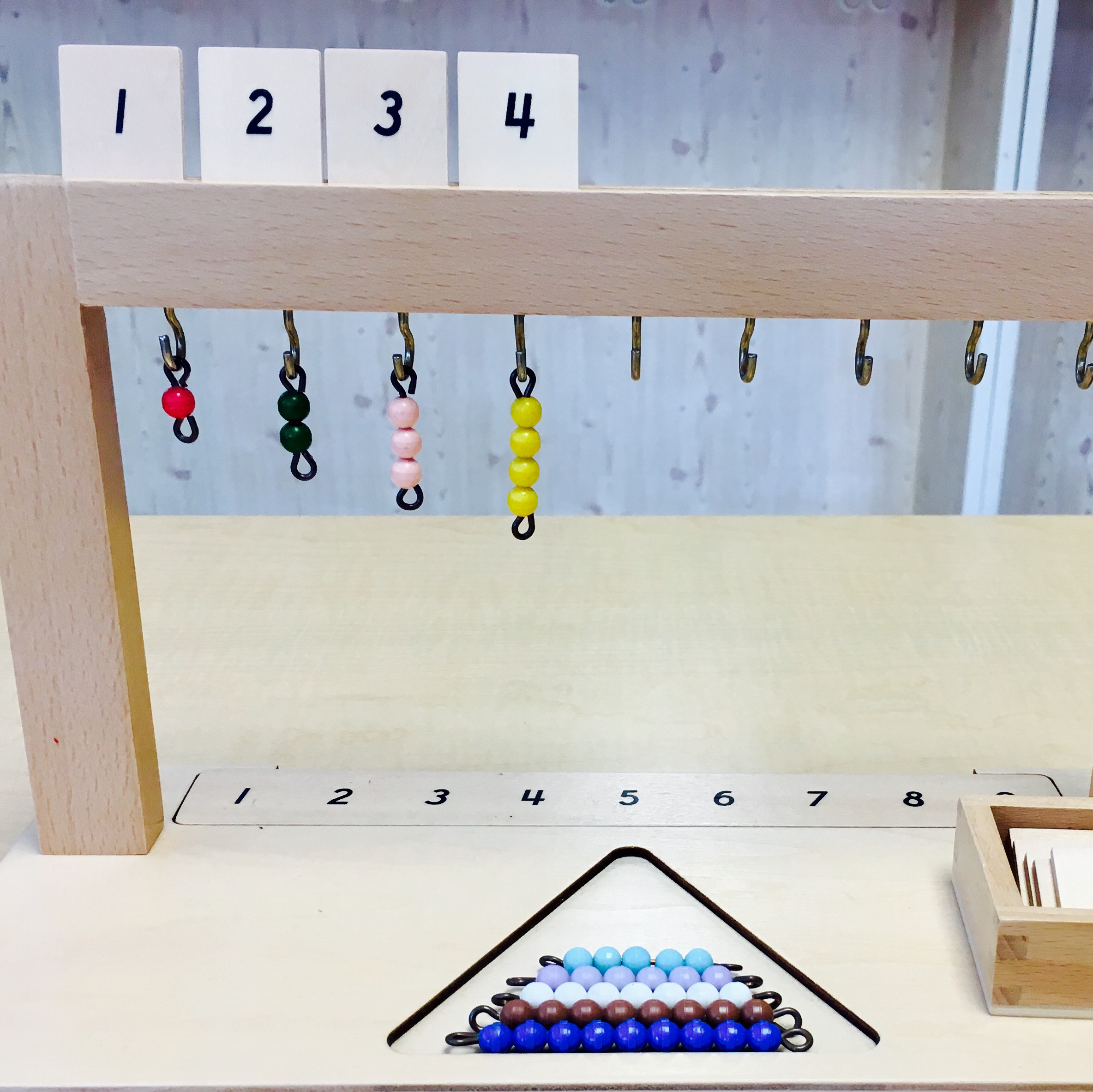The Montessori Math curriculum not only exposes children to higher level math concepts in a fun and engaging way, but it also establishes a lasting knowledge of the underlying logic to abstract mathematical concepts. Through manipulating the self-correcting materials, children uncover mathematical concepts such as number, quantity, operations, and fractions in a way that is interesting to them.
First, through concrete explorations, children begin to discover relationships between size and number. Through seeing, feeling, and manipulating materials, children learn how to read numbers, and how to count correlating quantities. In these experiences they see and feel that as numbers grow in size, quantities also grow. They also learn the importance of the number zero- first through understanding that when zero stands alone it means “nothing”, and later through understanding that zero can serve as a placeholder in larger numbers.
Once the relationships between numbers and quantities are established, children begin to discover relationships and patterns in numbers. Through games and collaborative materials, children learn that numbers change through operations such as addition, subtraction, multiplication, and division. They also learn to apply these skills in real-life ways (for example, using fractions during snack time, division in play time, and subtraction and addition during roll call each day). The interrelated nature of the materials guide children towards making connections between their learning, allowing for a deeper understanding of the mathematical concepts behind their work. For example, a child who is learning how to multiply, will soon understand that skip counting is an effective way to multiply quickly.
Take a closer look at the Montessori Math curriculum as narrated by Anna Perry from the Seton Institute:
Back to Our ClassroomComments are closed.



Recent Comments